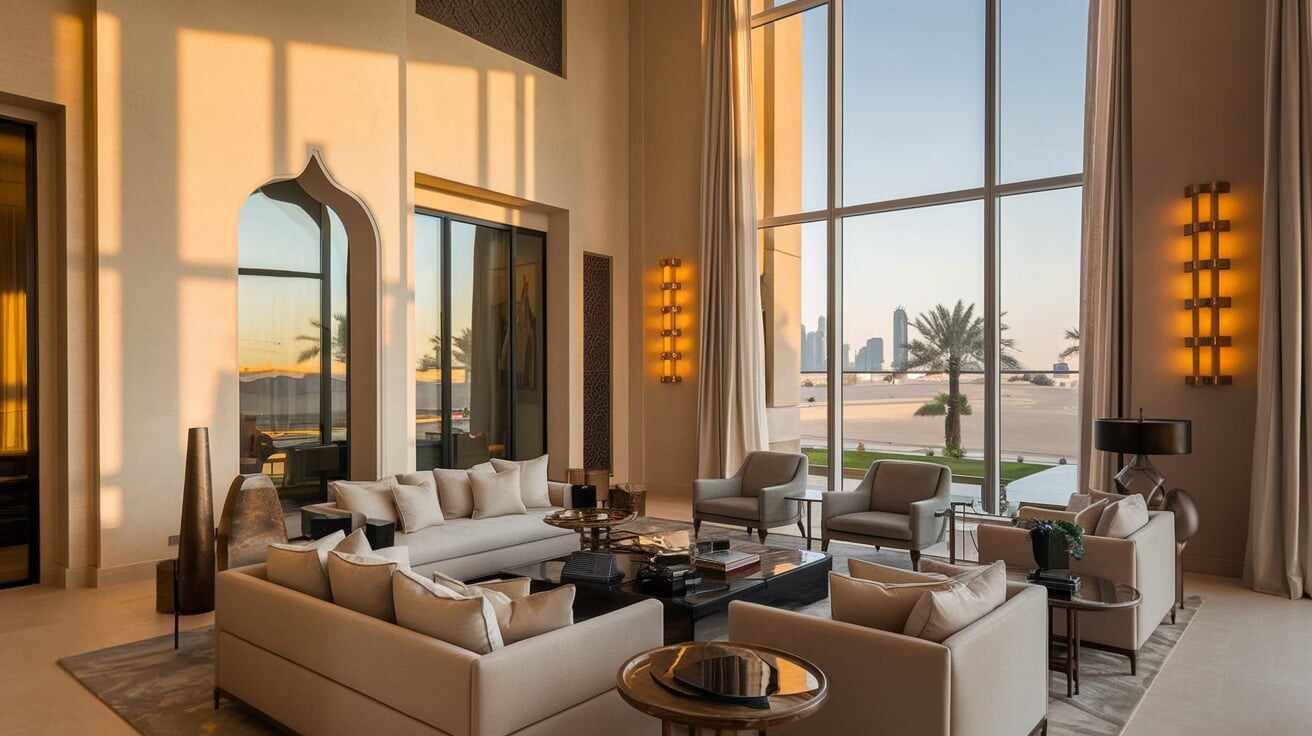How Lighting Affects Wall Colors plays a crucial role in determining how shades appear in your home. Both natural and artificial light sources impact color perception, making some tones look brighter or darker. Choosing a professional wall painting service ensures the right paint and finish to enhance lighting effects. Understanding how lighting affects wall colors helps in selecting the perfect combination to complement your interior design and create the ideal ambiance.
The Science Behind Light and Color Perception
How Lighting Affects Wall Colors can be seen in the unique interaction between colors and light. Different light sources cause color temperatures to fluctuate warm light enhances reds and yellows, while cool light highlights blues and greens. Understanding how lighting affects wall colors helps you make informed choices, ensuring the perfect ambiance for your space.
Morning Light (East-Facing Rooms)
The tone of morning sunshine is bluish and cold. Darker hues may appear muted, while lighter hues seem sharper. In rooms that face east, soft pastels and neutral hues look their best.
Afternoon Light (West-Facing Rooms)
In the afternoon, apartments facing west are bathed in warm, golden light. The hues get warmer and fuller. Warm neutrals and earthy tones produce a homey atmosphere.
Midday Light (South-Facing Rooms)
Rooms facing south receive steady natural light. All day long, colors appear true to tone. Neutrals keep their natural tint, and bright shades stay bright.
Evening Light (North-Facing Rooms)
Soft, indirect light enters rooms that face north. Colors seem more muted and colder at times. The chilly impact is offset by warm hues like beige, brown, and gentle yellows.
Artificial Lighting and Wall Colors

Incandescent Lighting
The light from light bulbs is warm and yellow. Cool colors might be dulled by them, but warm tones are enhanced. Blues and greens appear subdued, but reds, oranges, and yellows are more vivid.
LED Lighting
Different color temperatures are available for LED lights. Cool LEDs (4000K-5000K) improve clean, contemporary aesthetics, while warm LEDs (2700K-3000K) produce a homey atmosphere.
Fluorescent Lighting
A colder, bluish tone is produced by fluorescent lights. Although they can make warm hues seem washed out, they look great against white and pastel surfaces.
Halogen Lighting
Halogen lights simulate daylight. They are perfect for highlight accent walls and décor since they correctly reveal colors.
Best Wall Colors for Different Lighting Conditions
Brightly Lit Rooms
Daylight is simulated with halogen lights. Because they accurately display colors, they are ideal for highlighting accent walls and layout.
Dimly Lit Spaces
Rooms with less light can be made brighter using lighter hues. Pale pastels, soft whites, and creams create an open, breezy feeling in rooms.
Rooms with Artificial Lighting
Select hues according to the temperature of the lightbulb. Cool lighting points out warm tones, whereas warm lighting goes well with cool tints.

Enhancing Ambience with Lighting and Wall Colors
Creating a Cozy Atmosphere
A calm environment is produced by warm wall colors and soft lighting. Make use of earthy colors like brown, caramel, and soft beige, as well as warm LEDs.
Achieving a Modern Look
Modern, improved spaces look better by cool white lighting. For a modern sound, combine with muted blues, light grays, or sharp whites.
Making Small Spaces Appear Larger
Openness is enhanced by reflective light. To enhance brightness, use glossy finishes, light light colors and gentle neutrals.
Adding Drama with Accent Walls
Well-placed lighting draws attention to feature walls. For a dramatic effect, add directional lighting to dark or textured borders.
Common Mistakes to Avoid
Ignoring Light Sources
Before completing, test paint samples in various lighting settings. Different knowledge causes a drastic change in color.
Overlooking Reflection and Sheen
Light is reflected on glossy surfaces, giving the appearance of lighter hues. Matte coatings grow color by absorbing light.
Mismatched Bulb Temperatures
Visual imbalance results from using several light temperatures in the same area. Keep things consistent for a complete appearance.
Testing Wall Colors Before Painting
Use Sample Swatches
To truly understand how lighting affects wall colors, paint large swatches on your walls and observe them throughout the day. Subtle changes in color become noticeable as artificial and natural lighting vary, helping you choose the perfect shade for your space.
Compare Under Different Lighting
To see how lighting affects wall colors, place samples in well-lit areas and corners. This ensures that your chosen colors complement all types of lighting, helping you achieve the perfect look for your space.

Consider Reflective Surfaces
How Lighting Affects Wall Colors is also influenced by decor, flooring, and furniture. To achieve a unified appearance, test samples should be placed next to existing items. Understanding how lighting affects wall colors ensures harmony between paint choices and interior elements.
How Dubai’s Climate Affects Wall Colors
The vivid sunlight in Dubai helps one’s ability to perceive color. Cool tones counterbalance the body of color, while vibrant hues could come across as too dazzling. While textured textures provide depth, reflective surfaces improve brightness.
Expert Wall Painting Solutions in Dubai
Dubai Paint offers customized solutions for expert painting services and professional color guidance. Their team ensures how lighting affects wall colors by providing long-lasting finishes and precise color accuracy. With the right wall color and lighting, you can create a stunning interior that enhances your home’s ambiance.



 Wall Painting
Wall Painting